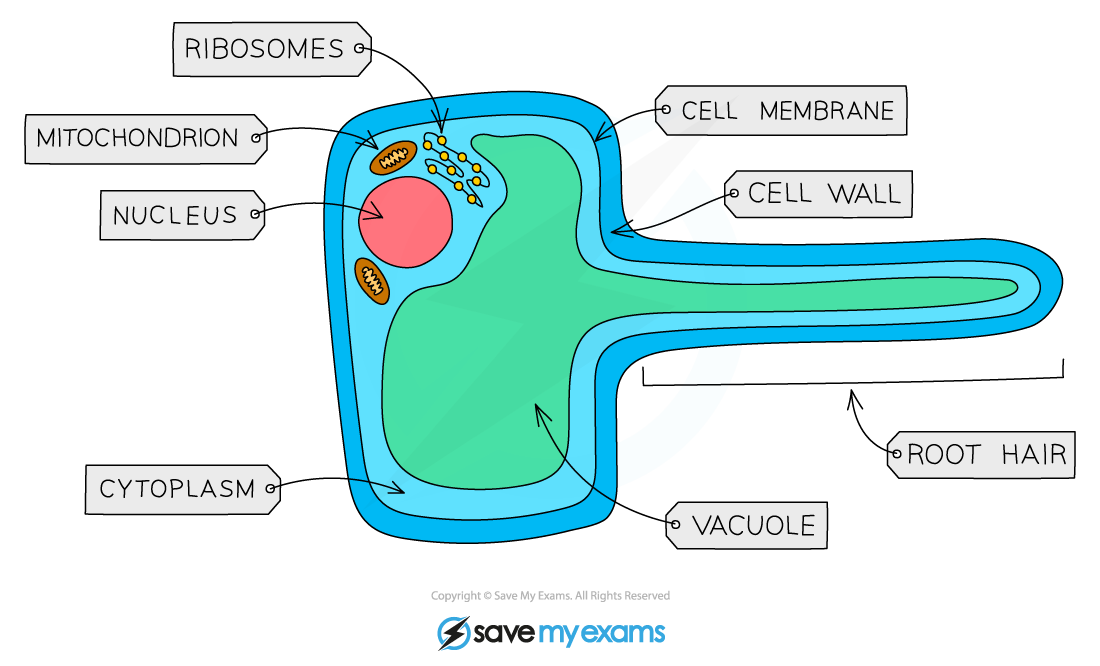Cell Specialisation (AQA GCSE Biology): Revision Note
Exam code: 8461
Did this video help you?
Specialised cells
A specialised cell is a cell that has a structure that aids its specific function
This could relate to cell shape, or the combination of cellular structures present within the cell
Cells specialise by undergoing a process known as differentiation
Specialised cells in animals
Nerve cells

Nerve cells (neurones) have an elongated structure which allows them to coordinate information from the brain and spinal cord with the rest of the body
Function:
Conduction of electrical impulses
Special features that aid function:
Nerve cells are long, meaning that they can conduct nerve impulses between different areas of the body
Extensions of the cytoplasm known as dendrites allowing nerve cells to communicate with other nerve cells, muscles and glands
The axon is covered with a fatty sheath which speeds up nerve impulse transmission
Muscle cells

Muscle cells contain layers of fibres which allow them to contract
Function:
Contraction for movement
Special features that aid function:
Muscle cells have many mitochondria to release energy for contraction
All muscle cells contain protein filaments that can slide over each other to allow muscle contraction
Sperm cells

Sperm cells are mobile – their tail helps propel them forward in search of an egg cell
Function:
Transfer of genetic material to an egg cell for fertilisation
Special features that aid function:
The mid-piece is packed with mitochondria to release energy (via respiration) for the tail
The tail rotates, propelling the sperm cell forward and allowing it to move
The acrosome in the head contains digestive enzymes that can break down the outer layer of an egg cell so that the haploid nucleus can enter to fuse with the egg’s nucleus
The head contains a nucleus with half the normal number of chromosomes, allowing the sperm cell to fuse with an egg cell to restore the normal chromosome number
Specialised cells in plants
Root hair cells

The root hair is an extension of the cytoplasm, increasing the surface area of the cell in contact with the soil to maximise absorption of water and minerals
Function:
Absorption of water and mineral ions from soil
Special features that aid function:
Root hairs increase surface area (SA) so the rate of water uptake by osmosis is greater
Thinner walls than other plant cells so that water can move through easily due to shorter diffusion distance
Mitochondria release energy for active transport of mineral ions
Xylem vessels

Xylem cells lose their top and bottom walls to form a continuous tube through which water moves from the roots to the leaves
Function:
Transport of water and dissolved ions
Special features that aid function:
No walls between cells to form continuous hollow tubes through which water is drawn upwards towards the leaves
Cells contain no organelles or cytoplasm, allowing free passage of water
Outer walls are thickened with a substance called lignin, strengthening the tubes and providing support for the plant
Phloem cells

Phloem cells are adapted for the transport of dissolved sugars and amino acids
Function:
Transport of dissolved sugars and amino acids
Special features that aid function:
Cells are joined end-to-end and contain holes in the end cell walls (sieve plates); this forms tubes which allow sugars and amino acids to flow easily
Cells have very few subcellular structures to aid the flow of materials
Examiner Tips and Tricks
You may be given some information (including an image) about an unfamiliar cell in an exam and asked to describe how it’s able to carry out its function. Remember to look at the shape of the cell and its internal structures. Does the cell have a shape which increases its surface area? Are there lots of ribosomes to make proteins (such as enzymes or hormones), or lots of mitochondria to transfer energy?

Unlock more, it's free!
Did this page help you?